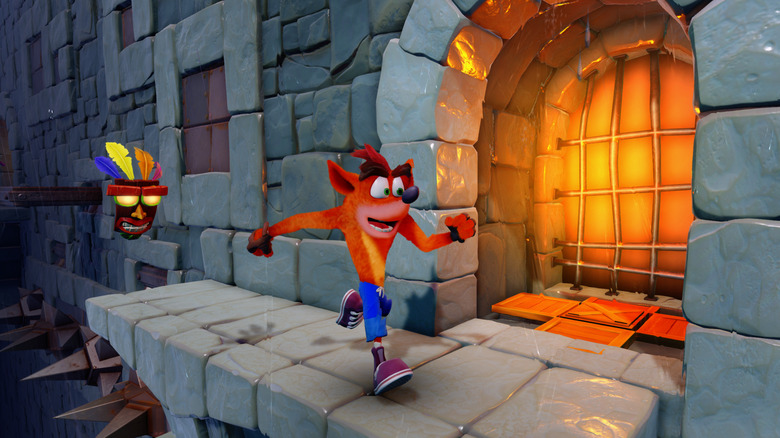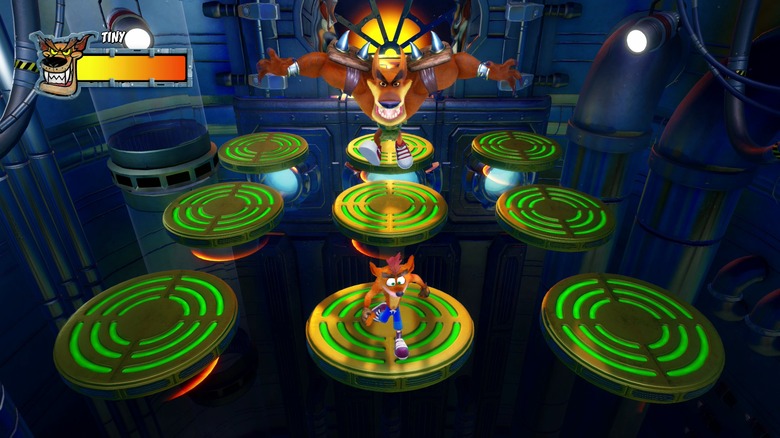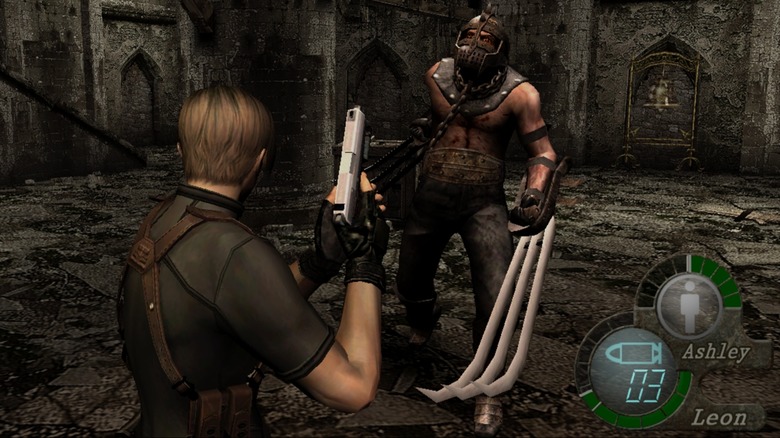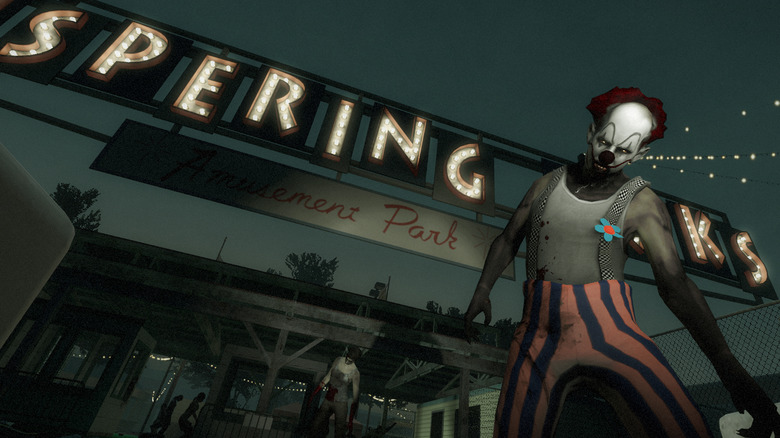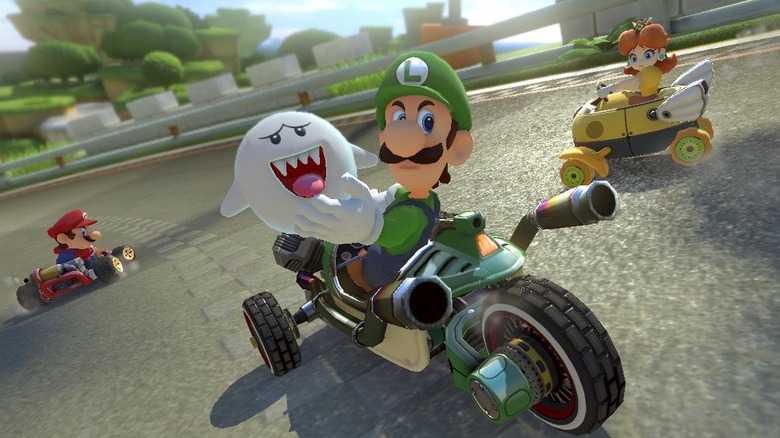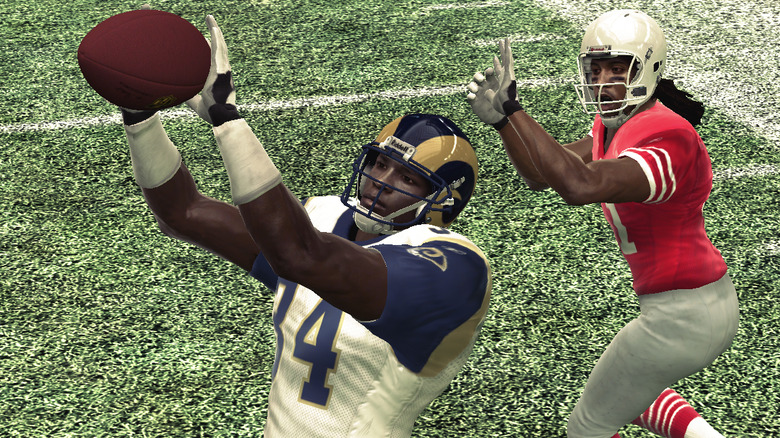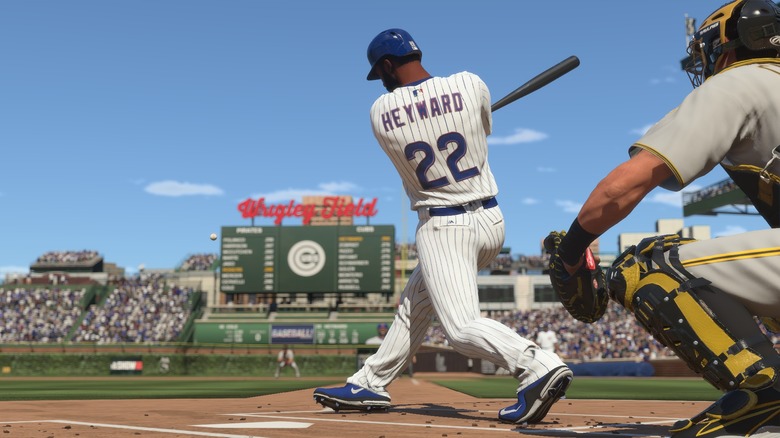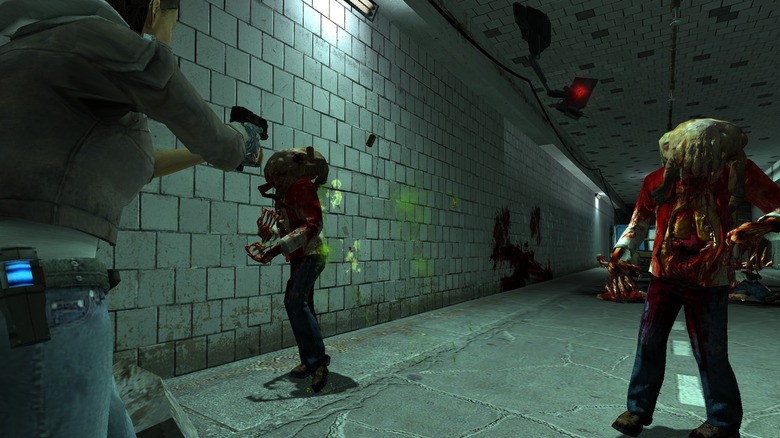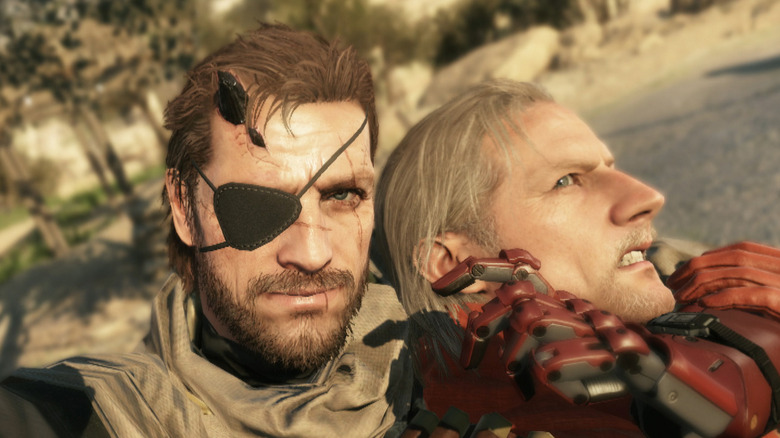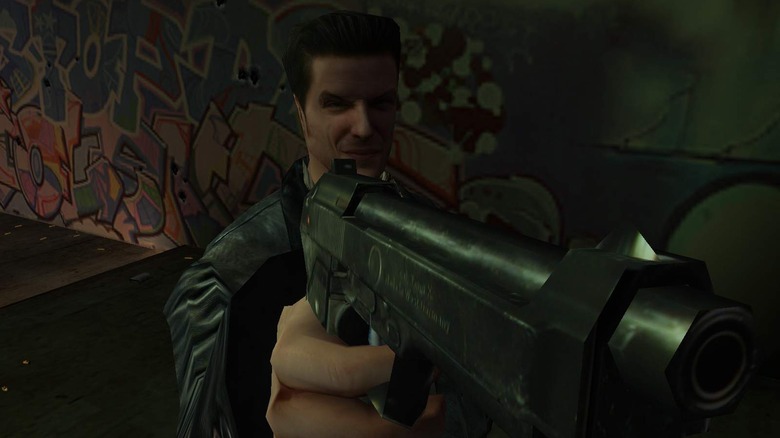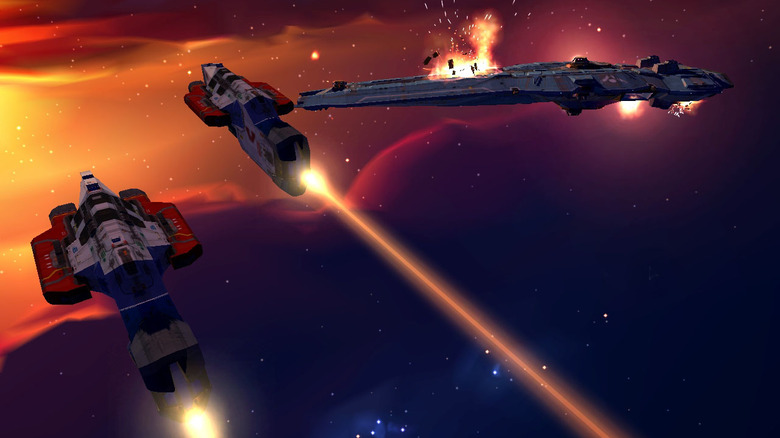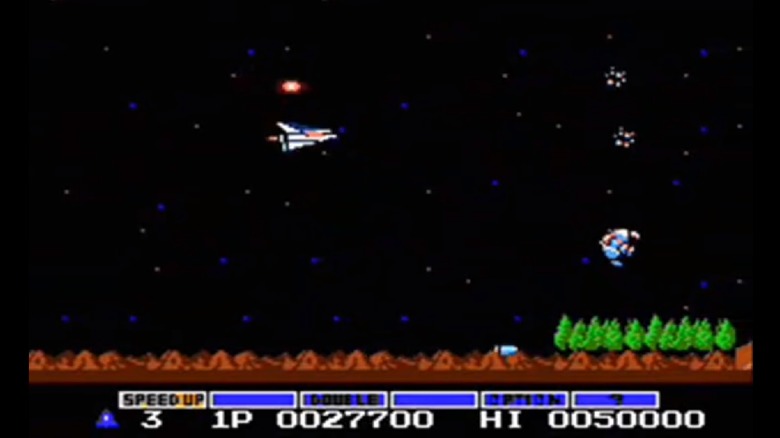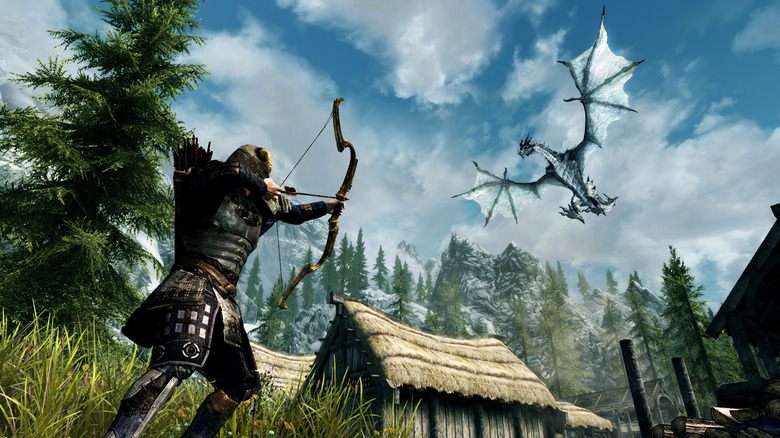Games You Didn't Know Featured Dynamic Difficulty
Dynamic difficulty is notoriously tough to get just right. Programming the game to adjust to the skill level of the player, on the fly, is a tricky concept, because if it is working right, you should barely even notice that a game is even doing so. A few extra health pickups here, enemies with a bit poorer aim there, and suddenly you're back on track, having fun and moving forward. Hitting that perfect level of keeping things difficult while remaining fair — and not making it obvious you're doing so — has got to be a challenge to developers. So, today, we are taking a look at some of our favorite games to feature dynamic difficulty.
When the system succeeds, it is a wonderful thing to behold. Gamasutra writes that, when asking the player to choose the difficulty level, you're often setting yourself up for failure. If a player doesn't know the game well, and a rigid difficulty is put into place, it can have negative results. Dynamic difficulty is so great because it can help create the perfect level of challenge for every player. On the other hand, dynamic difficulty done wrong can be a huge setback, punishing or rewarding players in ways unrelated to how they play the game. For better or worse, here are some the industry's most insightful examples of dynamic difficulty.
Crash Bandicoot 2 tried to correct frustrations from the first game
Starting with Crash Bandicoot 2: Cortex Strikes Back, developer Naughty Dog started to introduce dynamic difficulty elements to their 3D platformer. They implemented these settings because some of the levels from the first game frustrated players who weren't as good at the game.
In a blog post about the development of the Crash Bandicoot sequels, programmer Andy Gavin writes, "Our mantra became to help weaker players without changing the game for better players. We called all this DDA, Dynamic Difficulty Adjustment, and at the time the extent to which we did it was pretty novel. It would lead later Crash games to be the inclusive, perfectly balanced games they became. Good player, bad player, everyone loved Crash games. They never realized it is because they were all playing a slightly different game, balanced for their specific needs."
The game would adjust difficulty elements by counting sections where players would fail repeatedly, then bending the odds in their favor. Things like adding more checkpoints, granting better power-ups, or slowing down obstacles that chased Crash through the levels are just a few of the ways the game could tailor itself to the player's skill level.
Resident Evil 4's dynamic difficulty has never been officially acknowledged
This one is especially fascinating, because Capcom never stated that Resident Evil 4 adjusted its difficulty on the fly, and the game itself never informs you that things have gotten easier or harder. All we have to go on are player anecdotes and videos like this, which make for some seriously compelling cases of difficulty adjustments happening behind the scenes in Capcom's survival horror classic.
Again, without developer confirmation, we're taking stabs at what the game does dynamically. Endgadget writes that enemies deal more damage and act more aggressively if a player is having too easy of a time with the game, and even that the game limits ammo drops for the player's preferred weapon so that they will have to vary their approach as the game goes on.
Polygon writes that this masterful execution of dynamic difficulty is what allows players to stay in the "flow" of Resident Evil 4, and a big part of what makes it so fondly remembered.
Left 4 Dead's director pulls all sorts of cinematic strings
Few games pull off dynamic difficulty quite as seamlessly as Valve's Left 4 Dead – and it's a good thing, too, considering that's essentially what the entire game is based around. Valve created an entirely new AI, which they called the "Director," to handle things like zombie spawns, weapon locations, and even segments of music. This helps keep every playthrough of Left 4 Dead fresh and feeling like your favorite zombie films.
At its most basic level, the Director's main task is to handle zombies. It decides when to throw a horde at the players and what types of specials to mix in; it will always spawn zombies out of the players' view, and weapons and health packs have set locations where they may or may not appear depending on how players are faring. In Left 4 Dead 2, the Director even changes the layout of the level on occasion, offering path tweaks or additional challenges depending on how many resources the players have used up until that point. It's a remarkable system that brings an almost endless replayability to the game.
Mario Kart's AI "cheats" using rubber band difficulty
Mario Kart has featured varying degrees of dynamic difficulty in nearly every iteration to help make its races more interesting and exciting, regardless of the skill level of its players. It uses a variety of tricks to keep all racers in the game: the chances of you of obtaining better items increases depending on what place you are in, and the game will even keep track of players who have lost earlier races to give them a few extra bonuses in later rounds.
Mario Kart games also use what is called a Rubber Band AI that can change throughout the race. Rubber Band AI will cause computer-controlled racers to slow down, hitting more obstacles and generally not doing as well, if the player is struggling. On the opposite end, if the player is doing extremely well, the AI will give the CPU racers a bit of a speed boost, making it so they are always at least threatening to get back in the race.
On one hand, Mario Kart's AI helps keep every race exciting and gives lower-skilled players a chance to compete. However, especially at higher difficulties, it can definitely give the impression that the AI is "cheating." Just ask Kotaku.
Madden NFL 09 tested your football skills to adjust the difficulty
EA is always tweaking their formula for Madden NFL games, searching for new bullet points they can throw on the back of the box that isn't just "New, updated rosters!" For Madden NFL 09 — that's the one that features Brett Favre in his Packers jersey, right before he "unretired" and joined the Jets — that was a new difficulty adjustment called "Madden IQ." This mode put you through a series of drills to test your skills and adjust the difficulty accordingly.
Madden IQ was set up like a series of training camp drills. It would run you through a series of drills: catching passes, covering receivers, and punching through the offensive line. Based on how well or poorly you did, the game would adjust difficulty sliders in order to optimize your experience and match the AI to your skill level.
Although EA has worked to test new AI and difficulty settings in nearly every sports title they release, Madden IQ did not last very long. Maybe they'll take a page from Madden 09's cover athlete and unretire the mode somewhere down the line.
MLB: The Show features multiple layers of dynamic difficulty
Baseball is the perfect game genre to utilize dynamic difficulty on. Two distinct gameplay modes, pitching and hitting, give ample ways for the game to adjust itself. Dynamic difficulty can also make little tweaks to how well pitchers can place the ball or how well hitters react to curving pitches, giving every player a fair shake at finding success.
Giant Bomb writes that MLB: The Show not only adjusted hitting and pitching separately, but it would also indicate when and how the difficulty was adjusting to your skill level. The feature keeps you posted on which areas of your game need to improve, and several players argue that the game's dynamic difficulty helped them become better players. Whenever they would start to win consistently, the game would bump up the difficulty and force them to adapt. It's a good way for players to learn about the deficiencies in their performance.
Half-Life 2 used tiny dynamic tweaks for balance
Half-Life 2 doesn't lean into dynamic difficulty adjustments quite as much as many of the other games on this list, but it doesn't need to; the title is a masterclass in game design. However, Valve did implement a few dynamic adaptations to how well the player was doing, helping to lend even more cinematic elements to the many phenomenal set pieces the game already contains.
Destructoid writes that, if you play Half-Life 2 with developer commentary turned on, there are multiple references to the game's dynamic alterations. Slight changes, such as the amount of health or ammo drops that players can find when hunting for supplies, adjust themselves depending on how well the player is doing.
These small changes don't dramatically alter things, but they do help contribute to those heart-pounding moments we all search for when we play video games. Finishing a firefight with just just a bit of health left, fighting to the next supply drop and desperately scrambling to replenish your health and ammo: those are the memorable moments that we tell our friends about, and that's what dynamic difficulty in games like Half-Life 2 can pull off so well.
Metal Gear Solid 5's enemies adapt to your preferred tactics
In the early goings of Metal Gear Solid 5, you may think you've cracked the code: maybe you stealth around every mission, never letting the enemies spot you. Maybe you keep your distance, sniping every enemy before waltzing in and achieving your objective. Keep up the same technique on too many maps, however, and you will find that the enemies start to adapt to your favorite methods.
When you access the map, there are some icons on the side that show how enemies are adapting to your playstyle. There are several ways they can adapt: reaction time to the Fulton surface-to-air system, amount of soldiers wearing helmets, how much surveillance is on the mission, what type of weapons they carry, night vision goggles, and counter-snipers are just some of them. The AI enemies will make these adjustments based on the tactics you rely on more often, which will encourage players to try new methods of attack. Considering Metal Gear Solid 5 is a game centered on special ops missions, it makes sense that enemies would learn your techniques as you go through the story.
Max Payne's dynamic difficulty kept you feeling like an action star
Dynamic difficulty in games doesn't always need to be overt and obvious: similar to Half-Life 2, Max Payne features subtle tweaks here and there to help better immerse the player and stay more in that sweet spot "flow" that action movies and games aim for. Considering Max Payne did everything it could to emulate over-the-top action movies, nudging the AI difficulty down just a few notches whenever the player was struggling was a big boost to get us feeling like an action star again.
Features in Max Payne did not jump all over the map depending on your skill level, but the game would make small adjustments here and there based off of your previous results. Destructoid writes that the game would slightly increase the amount of aim assist the player would receive, for example, if they were having trouble placing their shots. Similarly, if the player was flying through levels, the AI would sometimes increase enemy health just a bit to make shootouts a bit more interesting.
Homeworld 2's dynamic difficulty made certain missions practically impossible
RTS seems like a tough genre to get dynamic difficulty scaling right. RTS games are so complex, and so many variables play into why someone wins or loses a game, it takes a lot of effort to set up an AI that can fairly adjust to your strategy. Indeed, even veteran developer Relic ran into a wall when it tried to address issues in the original Homeworld by adding dynamic difficulty to the sequel.
According to Destructoid, Relic was upset that players had found a way to abuse the AI of the first game, so they set up a dynamic difficulty that would adjust starting enemies on each mission to the size of your fleet from the end of the last mission. Unfortunately, this basically broke the game. For example, the fourth mission was nearly impossible if you played with certain strategies, due to a massive amount of enemy firepower at the start of the mission. The game's dynamic difficulty was implemented so poorly that early guides apparently recommended blowing your own fleet up as you completed missions so you would not be completely destroyed when starting a new one.
Gradius (also known as Nemesis) featured a very early form of dynamic difficulty
First released in 1985, you might think that Gradius is a bit too old to have sophisticated AI systems like dynamic difficulty. However, the game can actually adjust its difficulty based off of several factors in order to help everyone have a chance in this side-scrolling space shooter. The formula, as written, looks like this:
(TimerVar + LevelNum + BonusVar + OptionsNum + DipVar) / 2
This may look like total gibberish, but it's how Gradius determined how much the game should throw at you. "TimerVar" is the amount of time since the player last died in increments of 1000 frames. "LevelNum" is the number of levels completed. "BonusVar" is the number of power-ups collected. "OptionsNum" is the number of option ships the player has. Finally, "DipVar" is where the difficulty switches are set for the arcade machine.
Granted, it isn't perfect, but it just goes to show that dynamic difficulty has been around in at least some form for quite some time.
Oblivion and Skyrim are a tale of two different approaches
Bethesda's last two Elder Scrolls games proved that the company can learn from their mistakes with dynamic difficulty. Destructoid writes about Oblivion, "Scaling permeated nearly every aspect of gameplay ... Oblivion's own official strategy guides recommend that you complete certain quests before a certain level, such as one where you had to offer a wolf pelt to a shrine." This is because the game would change its enemy mobs to constantly keep up with the player, so if you waited too long, wolves would disappear from the map and the player would have to hope to randomly find a wolf pelt lying around. Players who emphasized non-combat skills could find themselves in an insurmountable hole late in the game, as powerful enemies would make quick work of the acrobatic blacksmith you had built up.
Bethesda learned from their mistakes going into Skyrim. VG247 calls it "extremely canny with its difficulty gating." There are areas of the game that constantly scale to the player, areas with static weak enemies (so the player gets a challenge early and feels like a powerhouse later), and areas with static strong enemies (to indicate powerful loot or advanced quests). Skyrim's approach to difficulty kept the game interesting throughout, but also provided a sense of progression that Oblivion lacked.

